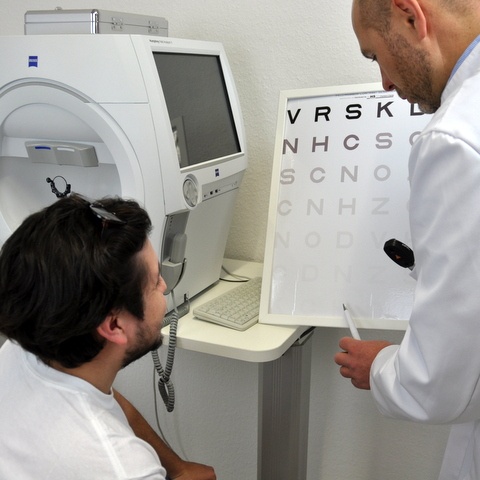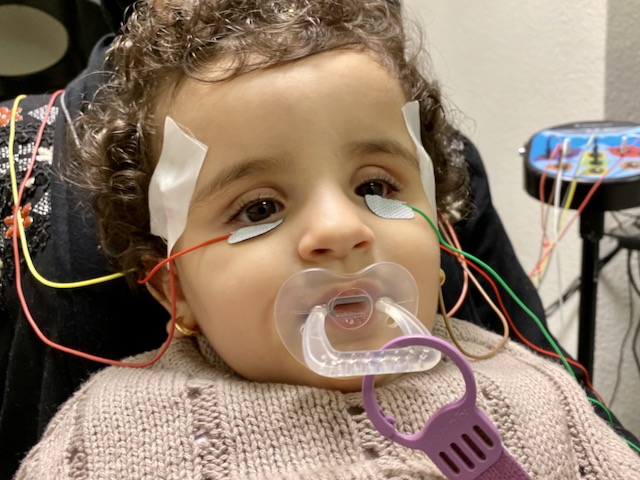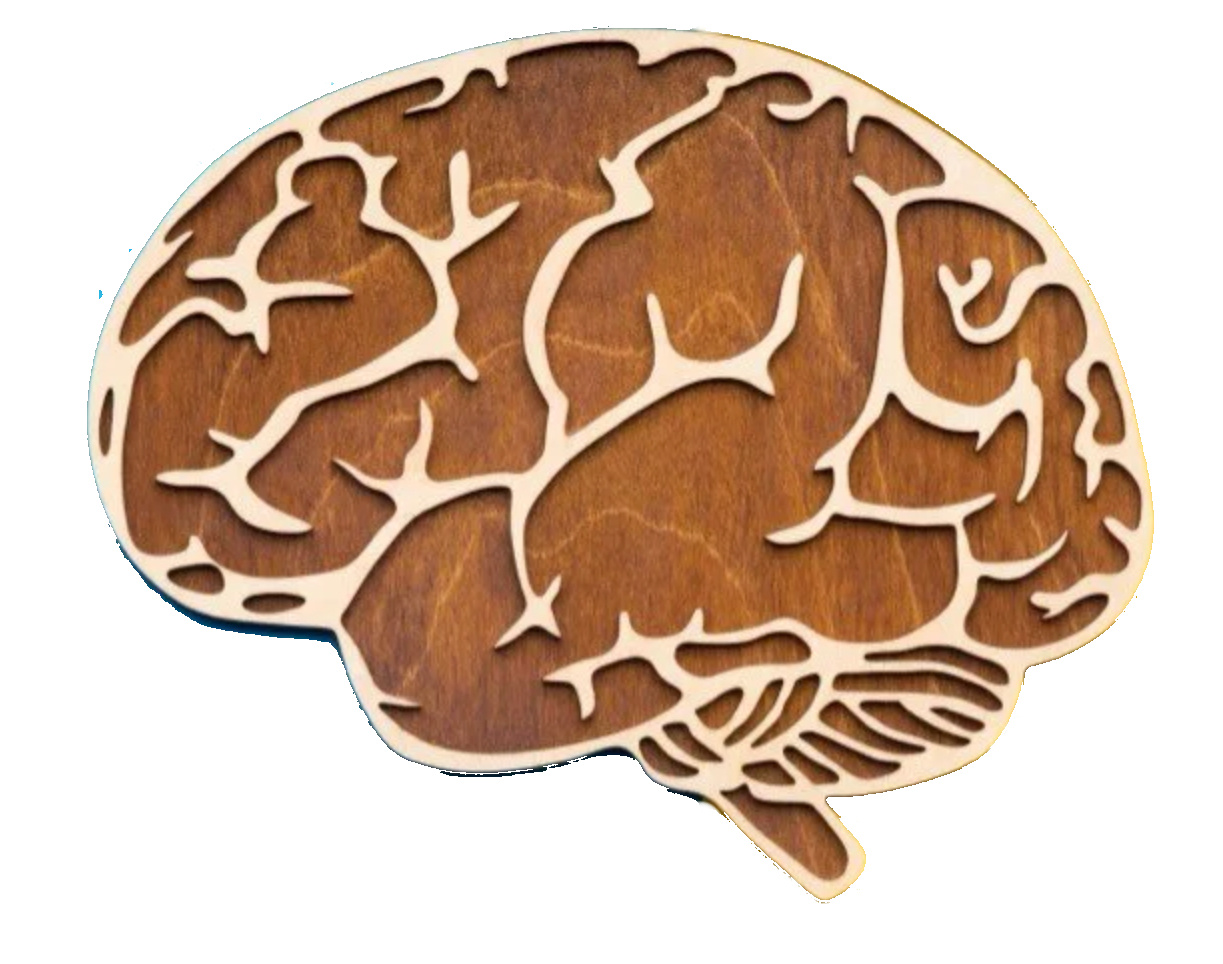Imagine a world where losing your sight is no longer a feared inevitability but a challenge that modern medicine can overcome. A world where cutting-edge technology and innovative therapies not only halt the progression of eye diseases but also restore vision, giving hope to millions. This is not a distant future—it's the horizon we're rapidly approaching in ophthalmology. Breakthrough innovations are transforming the landscape of eye care, ushering in an era where vision loss can be effectively managed or even reversed.
The Challenge of Vision Loss: Wet Age-Related Macular Degeneration
At the forefront of these challenges is wet age-related macular degeneration (AMD), a leading cause of severe vision loss among people aged 50 and older. Wet AMD occurs when abnormal blood vessels grow under the macula, the central part of the retina responsible for sharp, straight-ahead vision. These vessels leak fluid and blood, causing scarring of the macula and rapid vision deterioration.

For those affected, wet AMD can make daily activities like reading, driving, or recognizing faces incredibly difficult, significantly impacting quality of life. Current treatments require frequent eye injections and don't work for everyone, highlighting the urgent need for more effective and patient-friendly solutions.
A New Hope for Those Affected by Wet Age-Related Macular Degeneration (AMD)
If you or someone you care about is dealing with wet AMD, there's promising news that could make a real difference.
What's Happening?
A new treatment called HG202 is being developed. It's a groundbreaking therapy that uses advanced science to address wet AMD in a whole new way.
Why Is This Important?
- Current Treatments Can Be Challenging: Right now, people with wet AMD often need regular injections directly into the eye. This can be uncomfortable and hard to keep up with, especially since it might not work well for everyone.
- Not Everyone Responds Well: Nearly half of the patients don't get the results they hope for with current treatments.
How Is HG202 Different?
- Targets the Root Cause: Instead of just treating the symptoms, HG202 works by reducing the production of a protein called VEGF-A. This protein causes the unwanted growth of blood vessels that lead to vision loss in wet AMD.
- Uses Advanced Technology: HG202 uses something called CRISPR/Cas13, a tool that can precisely adjust how cells work without permanently changing your DNA.
What Could This Mean for You?
- Fewer Eye Injections: There's hope that HG202 might reduce or even eliminate the need for frequent injections.
- Better Vision Outcomes: By addressing the problem at its source, this treatment could help preserve your vision more effectively.
- Improved Quality of Life: With potentially less treatment hassle and better vision, day-to-day activities could become easier and more enjoyable.
Where Are We Now?
- Clinical Trials Underway: HG202 is entering human trials to ensure it's safe and effective. This is a crucial step before it can become widely available.
- Positive Early Results: Initial studies have shown promising results, giving hope that this could be a successful new treatment option.
What Should You Do Next?
- Stay Informed: Keep up with news about HG202 and other advancements in wet AMD treatment.
- Talk to Your Eye Doctor: Ask your healthcare provider about new treatments on the horizon and how they might fit into your care plan in the future.
- Seek Support: Remember, support groups and resources are available to help you navigate life with wet AMD.
Closing Thoughts
Medical science is making exciting progress in treating eye conditions like wet AMD. While HG202 is still being studied, it represents a hopeful step toward more effective and convenient treatments.
If you live science, below you will find more details:
Four Breakthrough Innovations Transforming Ophthalmology
The good news is that ophthalmology is experiencing a wave of innovations that promise to change the lives of those with vision impairments. Here are four groundbreaking developments leading the charge:
1. HG202: The First CRISPR/Cas13 RNA-Editing Therapy for Wet AMD
At the cutting edge of gene-editing technology, HG202 represents a revolutionary approach to treating wet AMD. Utilizing the CRISPR/Cas13Y system, HG202 targets and modifies RNA within retinal cells to reduce the production of VEGF-A, a protein that promotes the growth of abnormal blood vessels.
- Why It's a Breakthrough: Unlike traditional therapies that neutralize VEGF-A proteins after they're produced, HG202 prevents their production at the source—within the cell's RNA. This could lead to more effective treatment with potentially fewer injections.
2. Gene Therapy Advances for Inherited Retinal Diseases
Gene therapy is offering hope for conditions previously deemed untreatable, such as Leber congenital amaurosis and certain forms of retinitis pigmentosa.
- Why It's a Breakthrough: By delivering functional copies of defective genes directly to retinal cells, gene therapy can restore lost function. The FDA-approved voretigene neparvovec-rzyl (Luxturna) is a prime example, treating a specific genetic mutation causing vision loss.
3. Artificial Intelligence in Early Detection and Diagnosis
Artificial intelligence (AI) is making waves in ophthalmology through enhanced imaging and diagnostic capabilities.
- Why It's a Breakthrough: AI algorithms can analyze retinal images to detect early signs of diseases like diabetic retinopathy and AMD with remarkable accuracy. Early detection means earlier intervention, which can preserve vision.
4. Innovative Drug Delivery Systems
New drug delivery methods, such as the Port Delivery System (PDS) with ranibizumab, are changing how medications are administered.
- Why It's a Breakthrough: The PDS is a small, refillable implant that continuously delivers medication to the eye, reducing the need for frequent injections. This improves patient comfort and adherence to treatment plans.
HG202: A Revolutionary Approach to Treating Wet AMD
Let's take a closer look at HG202, the therapy poised to redefine treatment for wet AMD.
Addressing the Limitations of Current Treatments
Current standard treatments for wet AMD involve regular intravitreal injections of anti-VEGF drugs. While these can slow disease progression, they have drawbacks:
- Frequent Injections: Patients often require injections every 4-8 weeks, which can be burdensome and impact quality of life.
- Variable Efficacy: Up to 46% of patients may respond poorly or develop resistance over time.
- Side Effects: Repeated injections carry risks such as infection or increased eye pressure.
How HG202 Works
HG202 employs the CRISPR/Cas13Y system, a groundbreaking RNA-editing technology:
- RNA Targeting: Unlike CRISPR/Cas9, which edits DNA, Cas13Y targets RNA—the messenger molecules that carry genetic instructions from DNA to produce proteins.
- Reducing VEGF-A Production: By degrading VEGF-A mRNA, HG202 effectively reduces the production of the VEGF-A protein, addressing the problem at its source.
- Potential Benefits:
- Longer-Lasting Effects: May reduce the frequency of treatments.
- Improved Efficacy: Directly targeting RNA could enhance treatment outcomes for those unresponsive to existing therapies.
- Safety: RNA editing is potentially reversible and may carry fewer risks compared to permanent DNA alterations.
The Science Behind HG202: CRISPR/Cas13Y Technology
CRISPR technology has revolutionized genetic research, and Cas13 enzymes specifically target RNA molecules. Here's what makes Cas13Y special:
- High Specificity: Cas13Y can be programmed to recognize specific RNA sequences, minimizing off-target effects.
- Compact Size: Its small size facilitates delivery into retinal cells using viral vectors.
- Transient Action: Since RNA molecules are naturally degraded and replenished, any changes are not permanent, allowing for controlled therapeutic effects.
Research and Development Milestones
- Preclinical Success: In animal models, HG202 reduced abnormal blood vessel growth by up to 87%.
- Regulatory Approval: The FDA cleared the Investigational New Drug (IND) application for HG202, allowing clinical trials to proceed.
FDA Clearance and the BRIGHT Trial
The upcoming Phase 1 clinical trial, named BRIGHT (Beacon of RNA Interference with Gene-editing Therapy for Neovascular AMD), is set to evaluate HG202 in human patients.
Trial Objectives
- Safety and Tolerability: Primary focus on monitoring adverse effects.
- Efficacy Measures:
- Visual Acuity Improvement: Assessing changes in patients' vision.
- Retinal Thickness: Using imaging to detect anatomical changes.
- Treatment Burden Reduction: Evaluating the potential to decrease the frequency of eye injections.
What This Means for Patients
- Hope for Non-Responders: HG202 could provide an effective treatment for those who haven't benefited from current therapies.
- Enhanced Quality of Life: Fewer treatments and better vision preservation can significantly impact daily living.
Expanding Horizons: Beyond Wet AMD
The implications of HG202 and CRISPR/Cas13Y technology extend far beyond wet AMD. Here's how:
Potential Applications in Other Ocular Diseases
- Diabetic Retinopathy: Targeting VEGF-A mRNA could reduce abnormal blood vessel growth in the retina.
- Inherited Retinal Disorders: RNA editing may correct or silence mutant genes responsible for diseases like retinitis pigmentosa.
- Glaucoma: Modulating gene expression might protect optic nerve cells from damage.
A Paradigm Shift in Medicine
- Personalized Treatments: Therapies can be tailored to individual genetic profiles.
- Addressing Root Causes: By intervening at the genetic level, we can move from symptom management to disease modification.
- Cross-Disciplinary Impact: Advances in RNA-editing technology could influence treatments for systemic diseases beyond ophthalmology.
Takeaway Message: The future of vision care is brighter than ever, thanks to groundbreaking innovations like HG202. This revolutionary CRISPR/Cas13 RNA-editing therapy offers new hope for those battling wet age-related macular degeneration (AMD), potentially reducing treatment burdens and improving outcomes. Alongside advancements in gene therapy, artificial intelligence in diagnostics, and novel drug delivery systems, we're entering an era where vision loss can be effectively managed or even reversed. For patients and their families, staying informed about these developments is empowering. The horizon of ophthalmology is expanding, promising a world where sight is preserved, and quality of life is enhanced.
Conclusion: A Brighter Future for Vision Health
The horizon of ophthalmology is ablaze with innovation, and HG202 stands as a testament to what is possible when science and determination converge. For patients facing the daunting reality of vision loss due to wet AMD, these developments are more than just medical advancements—they are lifelines offering hope and renewed possibilities.
As we eagerly await the results of the BRIGHT trial, the potential for HG202 to revolutionize treatment is immense. Alongside other breakthroughs like gene therapy advancements, artificial intelligence in diagnostics, and innovative drug delivery systems, the future of eye care is indeed looking brighter than ever.
Remember: Staying informed and engaged with these developments empowers patients and families to make the best decisions for their eye health. Consult with your healthcare providers about emerging therapies and participate in discussions about clinical trials when appropriate.
Disclaimer: The information presented in this blog is for educational and informational purposes only and reflects knowledge available up to October 2023. HG202 and other therapies discussed are currently under clinical investigation and have not yet been approved by regulatory authorities for general clinical use. The safety, efficacy, and potential risks of these treatments are still being evaluated through rigorous clinical trials. This blog does not constitute medical advice and should not replace consultations with qualified healthcare professionals. If you or someone you know is affected by wet age-related macular degeneration or any other eye condition, please consult an eye care specialist or medical practitioner for personalized advice and treatment options. The author and publisher disclaim any liability for decisions made based on the information provided herein.





Comments
Currently, there are no comments. Be the first to post one!